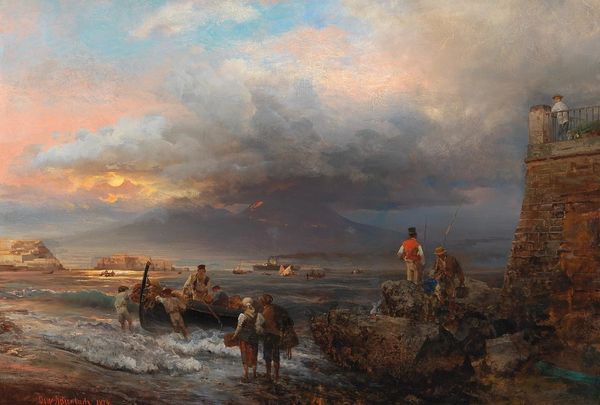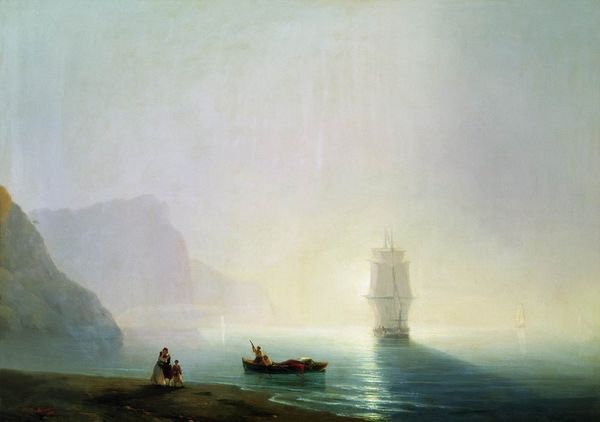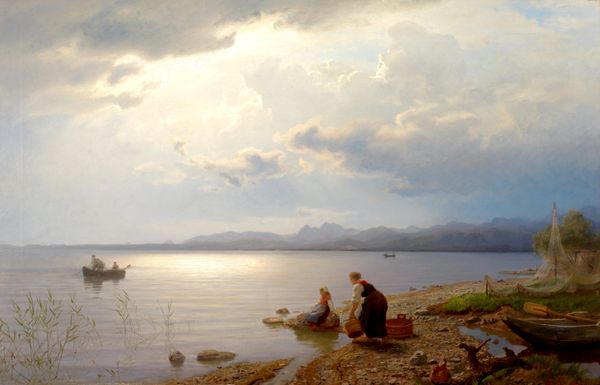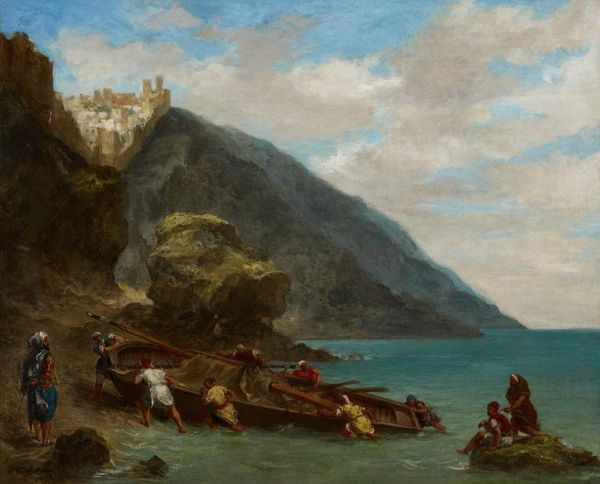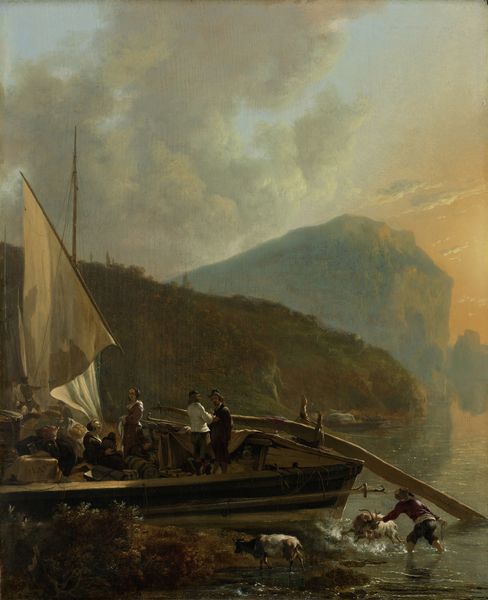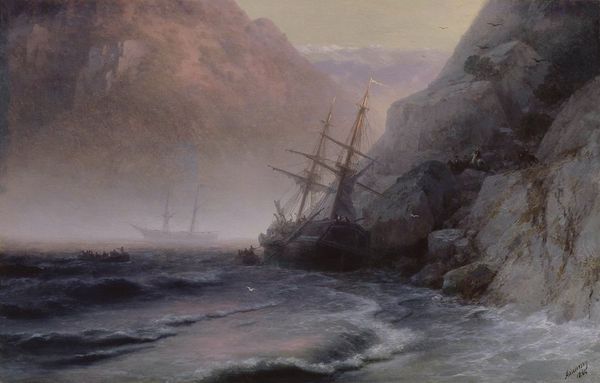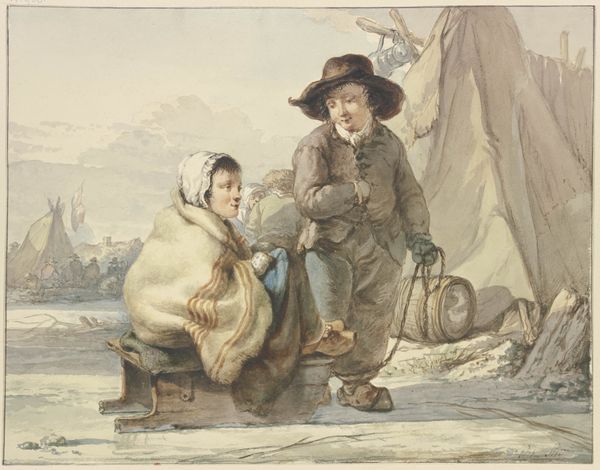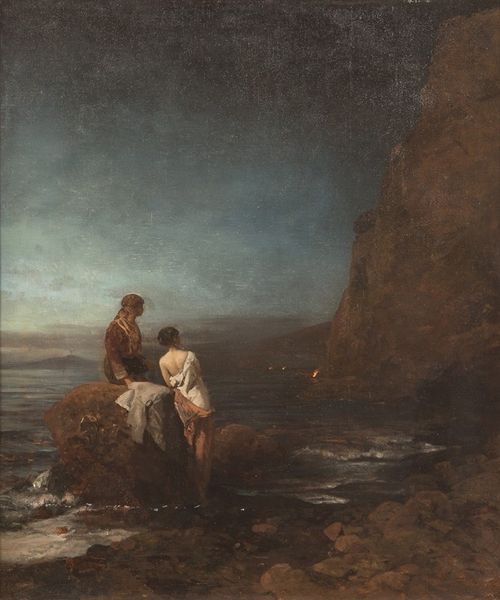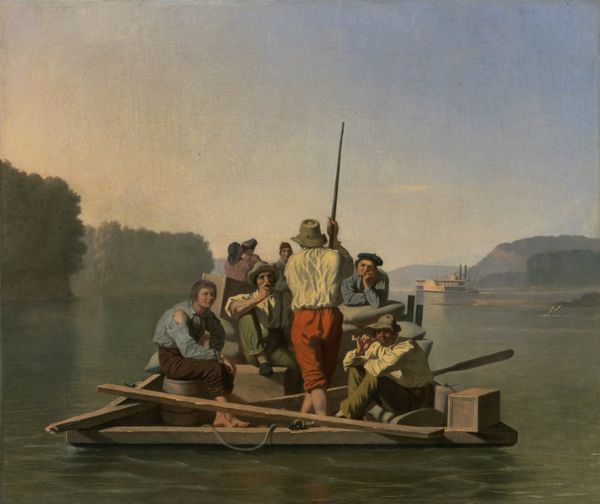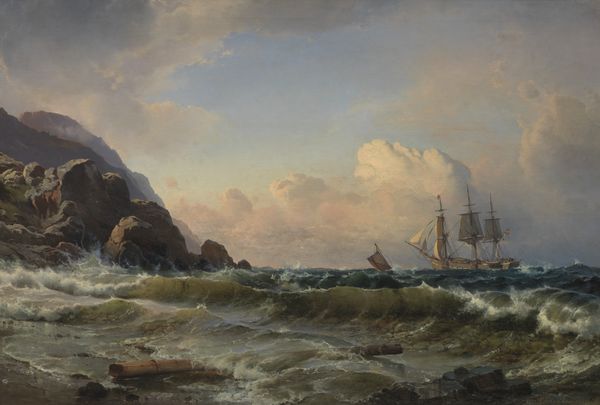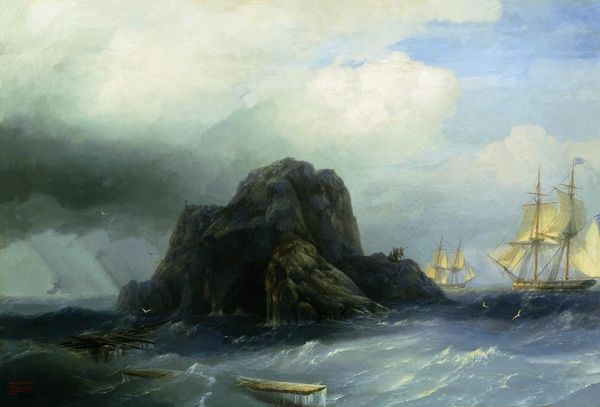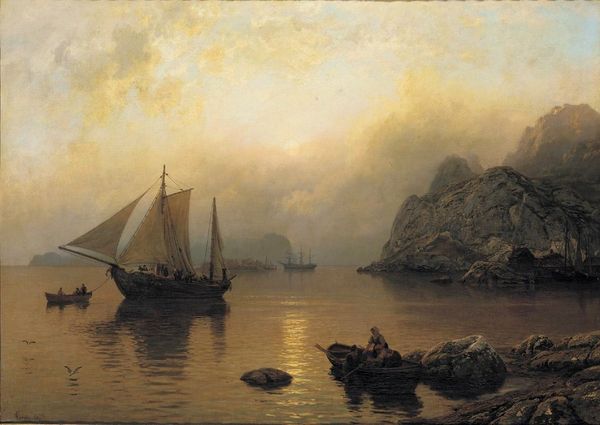
Dimensions: 94 x 116 cm
Copyright: Public domain
Curator: Domenico Induno painted "Young Fishermen" in 1855. It depicts three children on what appears to be a dock overlooking a seascape. What are your first impressions? Editor: Melancholy. The muted colors and the children's postures convey a sense of pensive quiet. Notice how the light catches the rough texture of the stone, contrasting with the soft curves of the children’s faces. Curator: The Italian Risorgimento context is very relevant here. Induno's paintings often depicted scenes of everyday life. Presenting a more nuanced representation of childhood challenges prevailing stereotypes. Consider, the children’s work becomes central, not picturesque elements, reflecting Italian societal shifts. Editor: Absolutely, but Induno’s formal control enhances that message. The composition leads our eye from the girls on the left across to the fishing boy, then up and back along his fishing pole. The children are arranged as triangles of shape, lending the image stability despite its pathos. Curator: And that pose of the boy tells us so much. He isn't presented as a hero of labour but as a dreamy boy absorbed in thought. It encourages a more humanistic understanding of young laborers and invites empathy from the rising middle class. Editor: I find the textural contrasts captivating, too. The soft modeling of skin against the rough spun fabric creates a haptic sense—I can almost feel the weight of the rough cloth. Curator: And that's so crucial in a work aiming for social commentary! Induno masterfully weaves commentary within genre painting, inviting his viewers into their world. Editor: Agreed. The restrained palette emphasizes the emotional impact without veering into sentimentality. A clever technique used to generate social commentary. Curator: Ultimately, "Young Fishermen" operates as both a romanticized vision and a poignant statement on working-class children, echoing broader cultural themes. Editor: Precisely, a successful interplay between the social and the formal—resulting in a surprisingly affecting artwork.
Comments
No comments
Be the first to comment and join the conversation on the ultimate creative platform.
